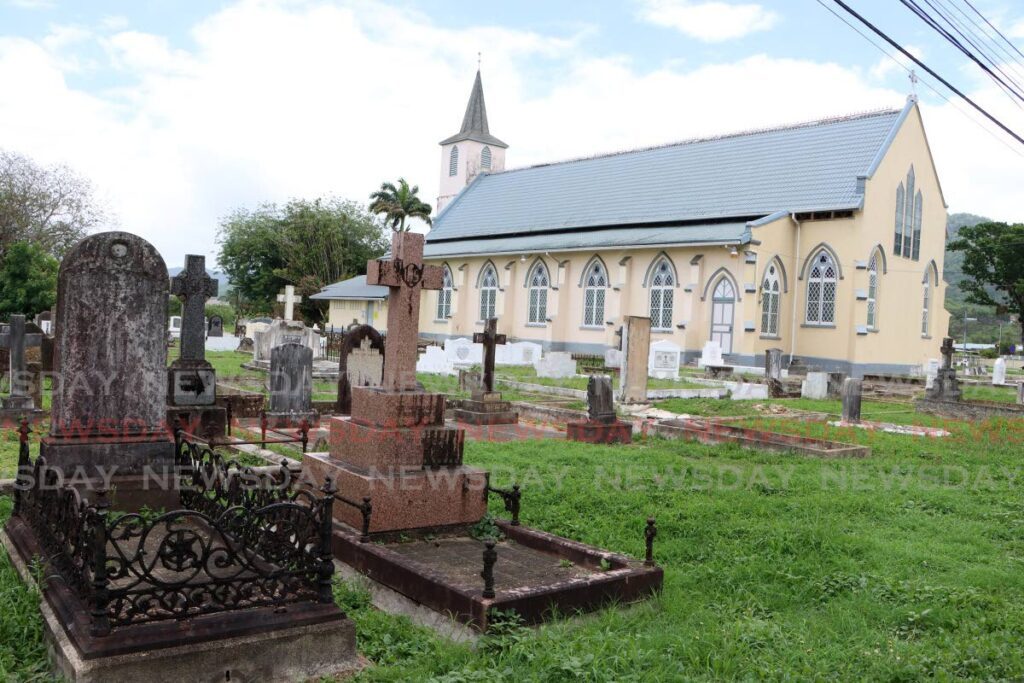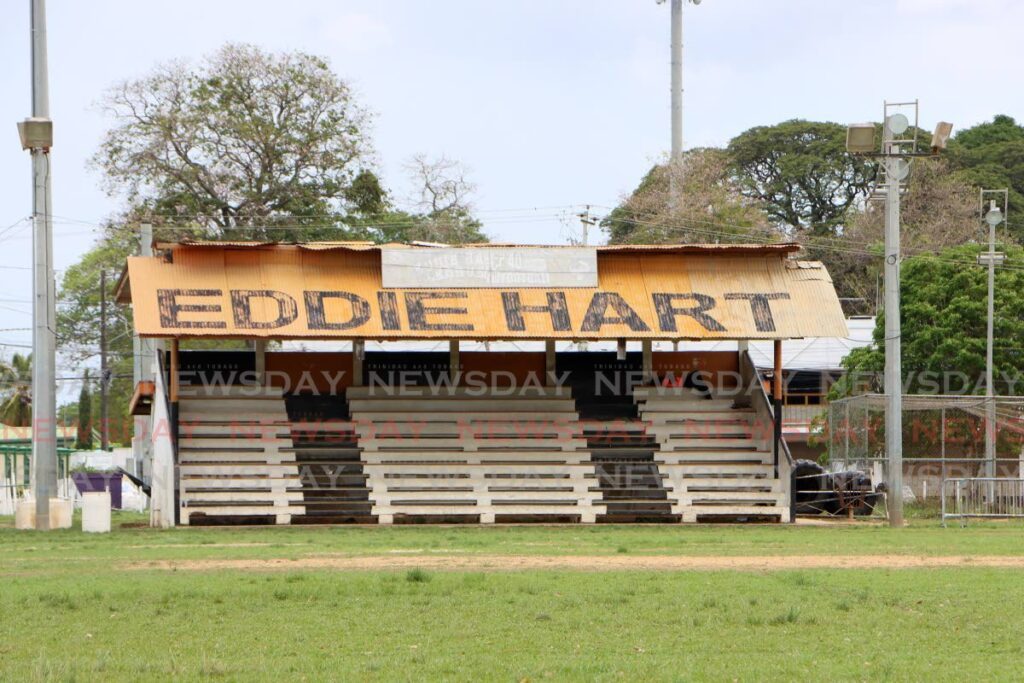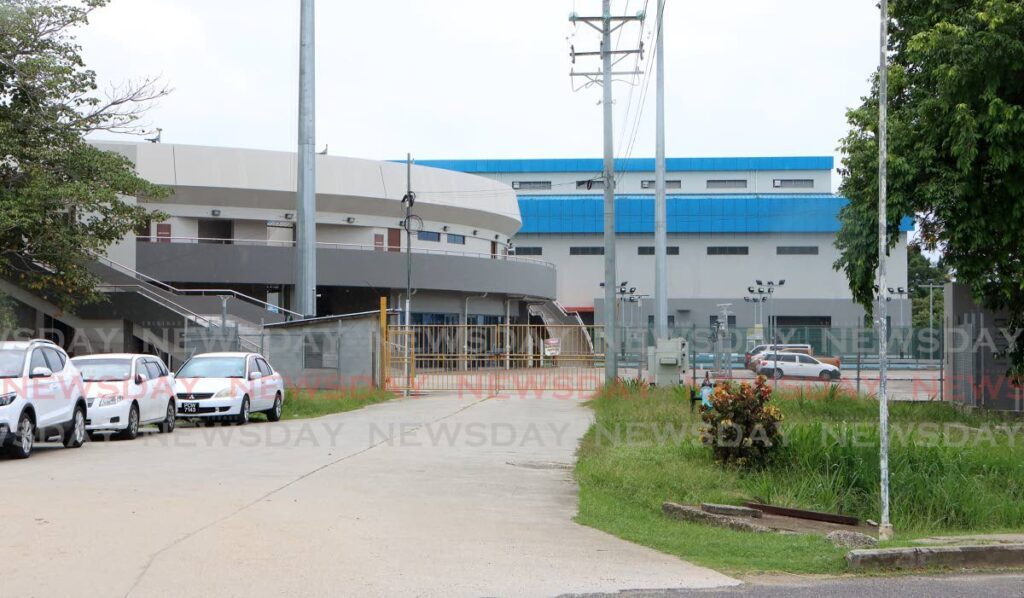Tacarigua Savannah: 400 years and counting

PROF SELWYN CUDJOE says the village of Tacarigua is one of the oldest in Trinidad, as it is over 400 years old.
Historical records show the Tacarigua Savannah once stretched from Arima to San Juan to Caroni.
Speaking at a lecture titled Tacarigua, A Historical Village in Trinidad: Orange Grove Savannah a Legacy Worth Preserving, hosted by the Save Our Green Spaces Committee, on June 4, he said the ward of Tacarigua was founded a few decades after St Joseph, the first capital of TT.
The name of the village appears for the first time in the historical record in 1595,and he said it was one of the first encomiendas established by the Spanish.
“Tacariguans lived among the Amerindians. Tacarigua is an Amerindian word, which I found in a Carib dictionary in the National Library. Tacarigua is believed to come from a Venezuelan village, 100 miles outside of Caracas."
It is important to understand, he said, that Tacarigua became "one of the richest villages in 1802, with 14 sugar factories, the fourth largest number of sugar mills in the island. It had light rum distilleries, two coffee mills and a steam engine. We used to produce brown crystals through a vacuum pan process, as opposed to the Muscovado process. We’ve always been an important part of Trinidad.”

Cudjoe said the largest slaveowner in TT, William Hardin Burnley, had built his mansion there in 1821, approximately 100 yards south of the Eddie Hart Pavilion.
“When Burnley came here, he tief all the people money and built a tapia house. The walls were stronger than anything else and ecologically friendly. He acquired 13 plantations all over the country and became one of the richest men in the Caribbean. When slavery ended, in terms of compensation, Burnley got the most money, and was still making money because of the sugar production.”
He said the only remaining physical memory of Burnley’s estate was a coolie pistash tree.
Cudjoe said St Mary’s Village was established first after Emancipation, followed by Paradise, which was predominantly Hindu, and Dinsley which was predominantly Muslim.
“From its earliest days, Tacariguans lived together in relative peace and harmony in a community where the commitment of sharing and caring for one another was always a major priority and participation in your community. We are ‘districkers’ for a long time."

Cudjoe was born, raised and lives in Tacarigua. His great-grandfather and great-grandmother Jonathan and Ameila Cudjoe were born in Tacarigua in 1833 and 1837. His grandparents Robert James and Moria (nee Bonas) and his father, Lionel, were all born in Tacarigua. He said his father used to take children to school at the Tacarigua Presbyterian School, and his mother and grandmother were buried in the cemetery there.
In his book Preserving the Tacarigua Savannah: Respecting Our Heritage, published in 2013, Cudjoe said, “When formal freedom and apprenticeship started in 1834 and 1838 respectively, the Crown began to settle citizens (they were subjects then) on the savannah lands.
“Gradually those plains began to absorb the bulk of these newly-freed citizens and newcomers to the island. In spite of the encroachment on the savannah lands (they called them 'the natural savannah') the government and later the planters still retained a considerable portion of the savannah for sport and recreation.”
Cudjoe said in 1846, surveyor general Martin Sorzano, writing to governor Lord Harris, submitted a plan showing a large portion of the natural savannah of Arouca, as well as a small tract of land situated to the northward, and only separated from the said Savannah by the High Road.
“A small village has already been settled primarily by labourers (or ex-slaves), having purchased the lots from the proprietor of the said lands. There are already erected on the said savannah two churches, one of the Catholic and the other of the Presbyterian worship as also a Police Station.”

Sorzano said establishing a village on the savannah would concentrate at one point the population of the quarters of Tacarigua, Arouca, and a greater portion of Caroni. He said the locality was the healthiest in the colony and centrally situated.
In his book Cudjoe said the St Mary's Anglican Church was built in 1843 (although the old church was destroyed and the present church constructed in the 1920s), and the St Mary's Children's Home was built in 1857 for Indian children who had been orphaned on the voyage across the kala pani (black sea) to Trinidad. He said Eccles, whose tombstone is in one of the churches, built the orphanage, along with Burnley’s son.
The St Mary’s AC School at the east of the Holy Ground was first built in 1837 (it was called the Cocoa House) with the assistance of the "apprentices," as the formnerly enslaved became after 1834, and relocated to its present site in 1954. It stood in front of the St Mary's Rectory, built in 1841.
Cudjoe said the Tacarigua Presbyterian School (previously the Canadian Mission Indian School) was built in 1884.
The Tacarigua Welfare and Improvement Council or the Village Council had maintained and sustained the community, he said.
“The people organised themselves. We don’t need central government to organise us. Part of our problem is we don’t allow the community to organise themselves.
“The oldest school in TT was the Tacarigua EC school, established in 1837 by the villagers. The first church, built in 1840, was built with contributions from the villagers. People took care of business. The village council was an organ of popular democracy.”
He said the village council distributed the lands of the Orange Grove Savannah to private organisations in the 1960s, but the government interfered and took over the lands.
At the lecture, he said the land the St Mary’s Anglican Church Hall stands on was a Madrassi cemetery.
“My friend Michael Kangalee, in March 2023, he wrote to me to tell me, 'Selwyn, it was my paternal grandfather, Biro Sagat Persad Nanan, was the last person to be buried on this ground. His grave is at the corner of the old trainline and the river.
“We have to begin by respecting our people and respecting sacred ground. I want to suggest we should place a plaque on this ground to recognise the fact that it was a cemetery of the Madrassi Indians, and when we come here, we also stand on sacred ground, and we should do that because it’s the correct thing to do.'”
Cudjoe said he was writing a book about two Caribbean preachers, one of whom was Joshua Stanley, a lay reader in the Tacarigua Anglican Church. He said Stanley had filled 40 or 50 copybooks with sermons, beginning in 1915.
“It is important to have the recognition of people who have struggled in the community. I don’t know what is going to happen to the home of Mr Stanley, but that should be a historic home, as it produced one of our foremost intellectuals. I have his sermons. It took a long time to reproduce them, and we will possibly do an exhibit next year. We don’t know how to preserve things.”
Cudjoe explained how the savannah was gradually built on, beginning in the 1950s, when sugar became uneconomical for Trinidad Estates.
“They began to erect houses upon the savannah. It was gradual at first, just an experiment, and then it took on a life of its own. Within a 50-year period the entire savannah was inundated with houses, changing one of the most beautiful natural savannahs in the country into villages such as Trincity and Savannah Drive.
“In the 1960s the El Dorado ground was sold to Trintoplan and in the 1990s, Belgrove Funeral Home bought another piece of this ground, until the Trinidad Sugar Estates or Orange Grove began to sell out these lands in the 1950s.
"Further encroachment left us with a mere 39 acres, which the citizens of the area have continued to enjoy with abandonment.”
Over the years, the savannah and its surrounding areas have produced sportsmen of national note, including Ulric "Buggy” Haynes, Eddie Hart, Keith Achong, and Ellis "Puss" Achong. Noted artist, teacher and director of culture Mahmoud Pharouk (MP) Alladin was born in Tacarigua in 1919. He played a major role in the expansion of art education and was an important influence on a wide range of artists.
Cudjoe said the Tacarigua Savannah is one of the most-utilised sporting areas in the northeastern area of Trinidad.

“It is a place where people walk, jog, ride their bicycles, and play a range of sports and games from as early as 3 am-11 am and then again from 3 pm-11 pm on any given day. The eastern grounds are used heavily by ten schools in the area and by track-and-field club athletes who use the space for training and practice purposes. It is not too much to say that this is one of the most widely used recreational spaces in TT.”
He quoted ecologist Dr Carol James, who said the savannah sits at the foothills of the Northern Range, from which its watersheds provide copious volumes of fresh water into the rich aquiifers (natural underground water storage areas) lying low or below these green spaces.
“Indeed, it is the only uncontaminated set of aquifers of this size anywhere along the East-West Corridor responsible for supplying water needs of significant communities of nations.”
He said WASA had 15 wells on the savannah at one point, which was now reduced to ten.
It was for these reasons residents objected in 2013 to government plans to erect a multi-sports facility at the Orange Grove Savannah. They were successful in halting construction by taking the government to court.
The residents say they are currently facing challenges from the regional corporation in terms of neglect and gradual ceding of portions of the savannah to activities which reduce the green space.
Cudjoe said it is a sacred space that must be preserved.
“We must keep the space sacred so we can congregate and come together as people.
"Then there is the factor of mental health. We are by definition social and aesthetic beings, and if we want to ensure our survival, we must come together and say leave the space alone for the people of TT.”


Comments
"Tacarigua Savannah: 400 years and counting"